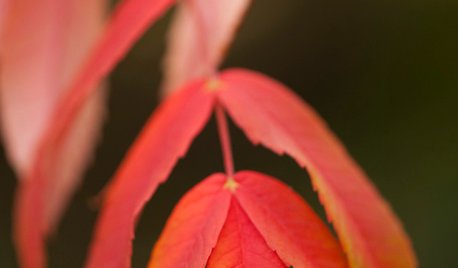Arborvitae Trees - Wind Burn?
cabezon
17 years ago
Related Stories

RED FOLIAGEGreat Design Tree: Staghorn Sumac
This fall superstar burns bright red and orange in the landscape — just keep an eye on its spread while you watch the show
Full Story
LIVING ROOMSHow to Convert Your Wood-Burning Fireplace
Learn about inserts and other options for switching your fireplace from wood to gas or electric
Full Story
FIREPLACESUpdated Woodstoves Keep Home Fires Burning
Better technology means more efficiency than ever for modern woodstoves
Full Story
GARDENING GUIDES5 Best-Behaved Trees to Grace a Patio
Big enough for shade but small enough for easy care, these amiable trees mind their manners in a modest outdoor space
Full Story
SIDE YARD IDEASNarrow Trees for Tight Garden Spaces
Boost interest in a side yard or another space-challenged area with the fragrance and color of these columnar trees
Full Story
GARDENING GUIDESPlant Black Cherry Trees for the Birds and Bees
Plant Prunus serotina in the Central and Eastern U.S. for spring flowers, interesting bark and beautiful fall color
Full Story
ARBOR DAY8 Reasons to Plant a Great Tree
Beauty is its own reward, but the benefits of planting the right tree in the right place go way beyond looks
Full Story
GARDENING GUIDESHow to Keep Your Citrus Trees Well Fed and Healthy
Ripe for some citrus fertilizer know-how? This mini guide will help your lemon, orange and grapefruit trees flourish
Full Story
GARDENING GUIDESWhen and How to Plant a Tree, and Why You Should
Trees add beauty while benefiting the environment. Learn the right way to plant one
Full Story
LANDSCAPE DESIGN7 Great Trees for Summer Shade and Fall Color
These landscape-pro faves straddle the seasons beautifully. Could one enhance your own yard?
Full Story





Loretta NJ Z6
cabezonOriginal Author
Related Professionals
Anderson Landscape Contractors · Waterbury Landscape Contractors · Bethel Park Landscape Contractors · Las Vegas Landscape Contractors · Maywood Landscape Contractors · South Farmingdale Landscape Contractors · Tacoma Landscape Contractors · Tehachapi Landscape Contractors · Baileys Crossroads Landscape Contractors · La Verne Swimming Pool Builders · South Miami Heights Swimming Pool Builders · Cutler Bay Fence Contractors · Santa Maria Fence Contractors · Silver Spring Fence Contractors · Winchester Center Stone, Pavers & ConcreteLoretta NJ Z6
cabezonOriginal Author
Loretta NJ Z6
cabezonOriginal Author
Loretta NJ Z6
joolz
Luv My Conifers
ofionnachta